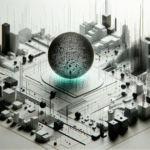Non-Destructive Testing in Pharmaceutical Facility Projects: Protecting Integrity While Maintaining Productivity
- NDT is key to maintaining safety and compliance in pharmaceutical facilities.
- Common techniques include Ultrasonic Testing, Radiographic Testing, and more.
- NDT supports routine maintenance and risk mitigation effectively.
- Automated NDT technologies are shaping the future of inspections.
- Embracing NDT optimizes productivity while safeguarding operations.
Table of Contents
- The Role and Importance of NDT in Pharmaceutical Facilities
- Common NDT Techniques Used in Pharmaceutical Facilities
- Applications of NDT Services in the Pharmaceutical Sector
- The Advantages of NDT in Pharmaceutical Projects
- Innovating NDT: The Future Is Automated
- In Conclusion
The Role and Importance of NDT in Pharmaceutical Facilities
Primary Purpose
Non-Destructive Testing is essential for assessing the quality and structural integrity of critical components that may be subject to severe operating conditions. According to the NDT Group, NDT allows for thorough evaluations without damaging the physical objects being tested. This is crucial within pharmaceutical manufacturing, where even minor defects can lead to significant contamination risks.
Ensuring Process Safety
Pharmaceutical facilities often operate high-pressure vessels, piping systems, storage tanks, and heat exchangers that contain hazardous chemicals under elevated temperatures and pressures. Implementing NDT techniques helps prevent leaks and catastrophic failures, thus safeguarding worker safety and the integrity of the pharmaceutical products being manufactured. Mistras Group highlights that NDT is vital in these high-risk environments to ensure that systems operate safely and efficiently (Mistras Group).
Compliance with Regulatory Standards
The pharmaceutical sector is governed by stringent regulatory standards, and maintaining compliance with Good Manufacturing Practices (GMP) is non-negotiable. NDT is instrumental in ensuring that all vital process assets meet these rigorous standards. Regular inspections via NDT techniques contribute to the overall quality assurance framework that regulatory bodies expect from pharmaceutical manufacturers.
Minimal Disruption to Operations
One of the standout features of NDT is that it allows for inspections to occur while facilities continue their operational activities. This means that maintenance can be performed with minimal disruption, thereby reducing costly downtimes and enhancing overall productivity—a win-win situation for any pharmaceutical operation (NDT Group).
Common NDT Techniques Used in Pharmaceutical Facilities
There are several NDT techniques utilized in the pharmaceutical sector, each with specific applications and benefits:
| Technique | Typical Applications | Key Benefits |
|---|---|---|
| Ultrasonic Testing | Assessing wall thickness, detecting internal flaws in tanks and pipes | High accuracy, detects subsurface defects |
| Radiographic Testing | Inspecting welds in piping and vessels, identifying internal cracks | Provides visual records, enables deep penetration |
| Magnetic Particle Testing | Surface defect detection in ferromagnetic materials | Quick, portable for on-site use |
| Liquid Penetrant Testing | Finding surface-breaking defects in smooth, non-porous materials | Simple, sensitive to surface flaws |
| Visual Inspection | General condition monitoring, weld checks | Immediate feedback, non-intrusive |
These techniques are chosen based on the specific material characteristics, asset types, and regulatory requirements of each project (Mistras Group and MFE Inspection Services). The specialized equipment necessary to perform these tests—including ultrasonic flaw detectors and X-ray imaging systems—ensures that results are both accurate and dependable.
Applications of NDT Services in the Pharmaceutical Sector
Routine Maintenance
Incorporating NDT into regular maintenance programs allows for the early detection of issues, such as corrosion, leaks, or other defects, before they escalate into major safety or quality risks. Companies like Mistras Group emphasize the importance of ongoing maintenance inspections driven by data from NDT evaluations.
Asset Integrity and Reliability
NDT also supports asset-condition monitoring and Risk-Based Inspection (RBI) assessments, allowing companies to effectively prioritize maintenance and replacement schedules. This approach ensures that resources are allocated judiciously, enhancing asset reliability without incurring unnecessary costs.
Engineering and Compliance Audits
Expert engineers often utilize NDT findings during compliance audits to evaluate the reliability and maintenance of existing systems. This practice not only identifies current weaknesses but also paves the way for continuous improvement initiatives within the organization.
Cold Eye Reviews
External engineering reviews incorporating NDT methods assess high-risk systems within the facility, such as incinerators and solvent recovery units. These reviews bolster safety by identifying potential vulnerabilities that might escape internal assessments (Mistras Group).
The Advantages of NDT in Pharmaceutical Projects
NDT offers a multitude of advantages that make it a cornerstone of the pharmaceutical supply chain:
- Enhanced product purity and safety: By identifying potential equipment failures early on, NDT prevents contamination before it becomes a risk (NDT Group).
- Worker protection: Regular NDT inspections help identify leaks or system weaknesses that could pose chemical or biological hazards to personnel.
- Downtime reduction: Since testing often occurs without interrupting production lines, NDT significantly minimizes costly operational halts.
- Asset value preservation: Because the process doesn’t damage equipment, the integrity and warranty of assets are maintained (NDT Group).
- Streamlined regulatory inspections: Comprehensive NDT documentation aids organizations during inspections, proving that ongoing asset integrity management is in place (Mistras Group).
Innovating NDT: The Future Is Automated
The realm of NDT is rapidly evolving, particularly with the introduction of automated and digital inspection technologies. Facilities are now leveraging predictive maintenance models and integrating real-time monitoring tools, which enhances precision and facilitates more comprehensive data analysis (MFE Inspection Services). These innovations not only improve the efficiency of inspections but also allow for more informed decision-making in asset management, contributing to the overall resilience of pharmaceutical operations.
In Conclusion
Non-Destructive Testing is indispensable to the successful operation of pharmaceutical facility projects. It safeguards product integrity, protects personnel, ensures compliance with regulations, and optimizes asset management—all performed without causing disruptions or damaging critical equipment. Organizations that embrace NDT not only meet industry standards but also position themselves favorably within the market by enhancing operational efficiency.
By investing in NDT, companies can ensure their facilities remain state-of-the-art while mitigating risks associated with safety and regulatory compliance. For experts in Pharma, Biotech, and Food Tech—it’s time to leverage the power of Non-Destructive Testing to safeguard your operations and boost productivity.
Are you ready to explore how QPS Engineering AG can enhance your facility’s integrity management through targeted NDT solutions? Feel free to contact us on LinkedIn and let our experts help you navigate the complexities of your next project!
*By embracing and integrating Non-Destructive Testing into your processes, you protect not only your bottom line but also the crucial lives that rely on the pharmaceutical innovations you provide.*







